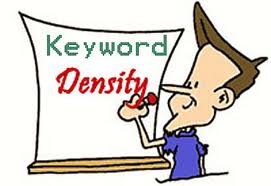If you’ve been following along in this chapter so far, you’ve already found out that your chosen keywords need to appear somewhere in your content.(D’oh!) Clearly, your Web site articles and other elements (stuff like video content) should be targeting the topics your potential visitors are searching for which means your articles and other elements will have your keywords embedded in them somewhere.
That’s pretty much a no-brainer. But if you take this a little bit further, it gets a bit more interesting. Some folks might be tempted to adopt what I call an in for a penny, in for a pound strategy if a little bit of something is a good thing, a lot of something is a very good thing. Why settle for a sprinkling of keywords on your Web site when, with a little bit of effort, you can saturate your Web site with a veritable blizzard of keywords?
Why indeed? Because if you yield to temptation, you’re guilty of committing keyword spam, the act of deploying your keywords merely to increase search engine results placement (bad!) rather than using them to provide site visitors with desired information (good!). No one likes spam. You don’t like spam, your potential Web visitors don’t like spam, and even spammers don’t like spam. Keyword spam doesn’t even help you increase your search engine results placement. In fact, Web crawlers that recognize keyword spam can get your number and list your site deeper in search results, or worse, completely de-list your site from those results.
The secret to having the right balance of keywords in your site content is keyword density the ratio of keyword occurrences to the overall number of words used on your site. Search engines vary on what’s acceptable for a keyword density. Google, for example, looks for a keyword density of around 2 percent, whereas Yahoo! and MSN look for a keyword density closer to 5 percent. Remember, these are guidelines. So, if your keyword density is less than 5 percent, your page will still appear in Yahoo! and MSN search results. But over 2 percent and you might be penalized by Google.
Most folks who do search engine optimization for a living tend to stay around the 2 percent keyword density mark to stay in Google’s good graces.
Time to picture what a 2 percent keyword density might actually look like.Think of it this way: If the page contains an article that’s 1,000 words in length, your selected keyword or phrase should appear no more than 20 times in the article. Twenty seems like a small number until you start adding keywords to articles and then you find that it takes some serious work to spin 1,000 words around one word or phrase and still have everything make sense and not sound repetitive.
The key here is to build an article around a specific topic, like “credit monitoring,” but then not to go overboard using the keyword or term which in this case is “credit monitoring.” The article should be a coherent information piece, and the use of the keyword or phrase will automatically grow out of that. You just have to be careful not to stuff that keyword or phrase into the article out of context in a misguided attempt to use your selected keyword as often as possible.
One trick that might help, though, involves thinking outside your body text box. It turns out that putting keywords into the body text of your article is only half the work when you’re dealing with keywords. Keywords should also appear in the title and the headings of articles you place on your Web site.Titles and headings are also given additional weight in search engine rankings because those are the elements on a page that catch a visitor’s eye.
Think of it as being like reading a newspaper. Most people scan a page of the newspaper before committing to reading any of it. They look at headlines,paragraph headings, and bold or italicized text before they decide which stories to read. Reading behavior is the same online someone clicks onto your page, scans the titles, headings, and specially formatted sections of the articles there, and then decides to read deeper or click away.
Keywords in your titles and headings help pull readers into the content of the article and help search crawlers classify your site by those keywords. See,search crawlers are designed to weigh the appearance of keywords in certain places like titles and headings just like people do. It’s written into their programming, so you might think of a search crawler as the ultimate reader.
Good Luck..!!














